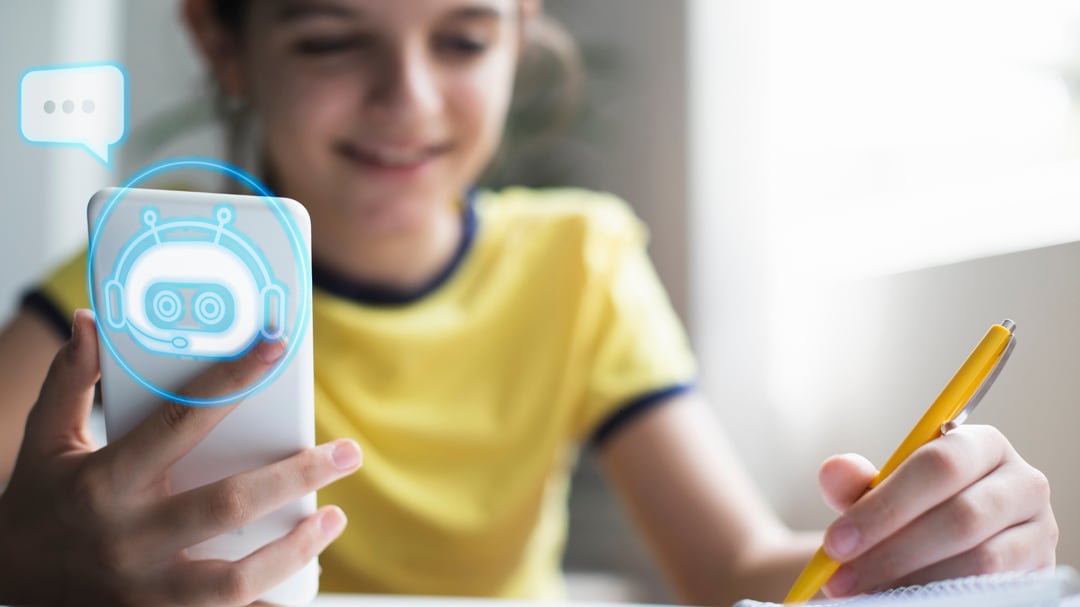“Every man can, if he so desires, become the sculptor of his own brain”
- Santiango Ramon Y Cajal
Santiango Ramon y Cajal (1852-1934), scientist and Nobel Laureate In 1906, Cajal received the Nobel Prize for cracking the code of the human brain and establishing the neuron as the basic unit of the nervous system. Whether he realized at the time or not, this finding started a scientific journey that continues today.
Investigation into these neurons and indeed of the whole brain, persists. Science has shown just how complex the brain is, how central it is to our lives, and importantly – that it can change and improve throughout our lifetime. It is plastic.
Our understanding of how the brain shapes behaviour and learning has made significant strides thanks to these scientific investigations: it’s time for education to apply science to its own evolution. It is time to put the Brain in Education. You can read more about the need for educational reform in our blog, Building the 21st Century Brain Through Positive Neuroplasticity.
Neuroeducation in Action
This blog is the first in a series exploring how schools and school systems can revolutionize their programming and student outcomes through Arrowsmith’s ecosystem. The series covers elements such as:
- Neuroplasticity – harnessing the brain’s remarkable capacity to change, and improving core capacities of learning and performance.
- Technology – how cognitive change can be put into educational practice, be digitally tracked, and reported upon – all in real time, from the viewpoint of students, teachers, facilitators and administrators.
- Community – how, as part of a professional learning community, teachers, facilitators and administrators can learn a cognitive methodology, refine their own practice, and benefit from evidence-based programming with the support of both human and digital resources.
In this blog: the brain. Let’s examine its role in learning and its remarkable ability to change and improve.
The Brain’s Role in Learning
Educators monitoring developments in their field will have come across terms like “neuroeducation” or “brain based learning.” But what do these terms really mean? And how can science actually inform educational practice? To answer this, Arrowsmith begins with identifying some core scientific concepts:
- The brain is a complex organ made up of discrete cognitive functions. Each function has a special job within learning. Functions such as visual memory, conceptual processing, auditory memory, attention, phonemic awareness, and internal number sense – work together while we complete tasks, whether simple or complex.
- Each cognitive function operates on a continuum, from weak to strong. The capacity of each function shapes its ability to contribute to learning and task completion.
- We each have our own unique cognitive profile. As unique as fingerprints. We each possess our own combination of strengths and weaknesses.
Educators can come to understand the role of these cognitive functions and through this, understand each student's unique cognitive profile. This perspective alone can lead to new insights of students’ learning, behaviour, and needs.
Completing the cognitive questionnaire can provide detailed insight.
Another fundamental scientific fact core to Arrowsmith’s approach: these cognitive functions can be improved through neuroplastic change and lead to significant changes in a student’s learning experience and reality.
Neuroplasticity – from Theory to Practice
You might feel that perhaps all learning is neuroplastic, that our brains are constantly adapting, growing and responding to feedback. This is true, and though, what we are talking about here is intentional and significant neuroplastic change targeted to specific cognitive functions.
How can we accelerate this positive neuroplastic change? How do we, as educators, play an active role in ensuring cognitive improvements are occurring? How can we use neuroplasticity to address and overcome students’ learning issues? Further, how can we prepare all students with core competencies recognized to be so urgent in today’s world? Check out our webinar, Putting the Brain in the Education Equation, for more insights.
For decades Arrowsmith has utilized the principles of neuroplasticity to enhance the student experience. Around the world, schools integrate Arrowsmith cognitive training into their school day. 30 minutes a day (or 4 hours a week) is all it takes.
Neuroplasticity in the Classroom - Precise Design
How can learning be strengthened? Through design.
Once Arrowsmith’s Founder Barbara Arrowsmith-Young studied the composite cognitive processes in learning, she determined not only the role of each cognitive function, but that each required its own cognitive exercise.
One exercise for processing information, one for remembering details. One exercise for visual memory for symbols (essential for reading), a different exercise for visual memory for objects (essential in nonverbal communication, navigation). One for critical thinking, problem solving,and mental initiative. Another for understanding the world of social relationships and emotional intelligence. Different functions need different activities to strengthen and enhance their functional capacity to learn and operate in the world.
While each exercise is different, they are all carefully designed to meet the critical conditions of neuroplastic change: targeted stimulation, active engagement, novelty and complexity, sustained practice and effortful processing. You can read more about these principles in our blog, 5 Key Principles of Neuroplasticity.
Students move through the cognitive exercises, meeting specific targets and goals. With each mastery, they are experiencing success as they enhance their capacity to learn. Within weeks of participation, they begin to experience cognitive change, ready to face more complex tasks: their brains are ready for the challenge.
Practical Applications
Many schools see cognitive enhancement as an opportunity for all, and have built 30 minute brain exercises into their daily schedules. These schools’ students are part of large scale studies and researchers are sharing positive and significant findings.
A school in Madrid, SEK St Isabel, for example, provided a daily cognitive activity to all their third grade students. Three months later, researchers measured significant improvement in:
- abstract reasoning and fluid intelligence
- visuospatial abilities, attention, and planning
- selective attention, concentration, and endurance
- processing speed
- deductive reasoning skills and cognitive flexibility
Other schools utilize Arrowsmith as their learning resource tool, enabling their students with learning issues to fundamentally end their struggle once their cognitive weakness has been strengthened. Marianne Vangoor, as Principal of an elementary school in Canada, describes the transferrable effects for her students’ participating in Arrowsmith:
“Reading scores for these students have increased, with some students making a gain of a year or more in four months. Other students have seen improvements in math, in writing, and penmanship. We are proud of our students and love celebrating their successes”.
She describes why her school invests in a cognitive program within their educational system:
“Arrowsmith has proven to be a vital and integral program at our school. One of our core values is that every student matters and having the Arrowsmith program available is one way of fulfilling that core value.”
Whatever the application, the outcomes are possible because of the careful design of the cognitive exercises, each meeting conditions of neuroplastic change. Educators are excited about what this means to student potential.
“We selected the Arrowsmith Program after researching the incredible benefits of neuroplasticity for students of all ages. It was important to us that Arrowsmith was based in science and that it has a long and proven history of success with students all around the world. We were inspired by the fact that this program was unique and the targeted cognitive exercises strengthen the brain and create new, stronger pathways for life.”
- Geraldine Zinsli, Founder of Brain Academi, Canada.
Implications and Outcomes
The brain is our students’ most precious asset. It shapes their lives and their ability to contribute to their community in meaningful ways. It determines the ease with which they learn and grow and adapt.
Neuroplasticity is not an abstract concept, a theory that might be possible. It is a fact of our brains’ capacity and it deserves to be part of every conversation about educational policy and reform. Neuroplasticity can revolutionize how schools recognize learning potential, and give educators critical tools to support and transform student learning.
Norman Doidge, author of The Brain That Changes Itself, explains why this is so important:
“The fact that Arrowsmith trains the brain processors that make possible reasoning and rationality, is arguably one of the most important positive developments one could imagine for our world, with its complex problems.”
Look for our next blog where we examine the role of the teacher as a facilitator in a capacity-based program like Arrowsmith. It describes how teachers can use innovation in science and technology to inform their practice, and experience their own journey in bringing neuroplasticity into the lives of their students and the classrooms of their schools. Learn more about Arrowsmith for educators today or find out how you, and your students, will benefit from becoming an Arrowsmith licensee.
Tags:
Neuroplasticity
January 18, 2024




